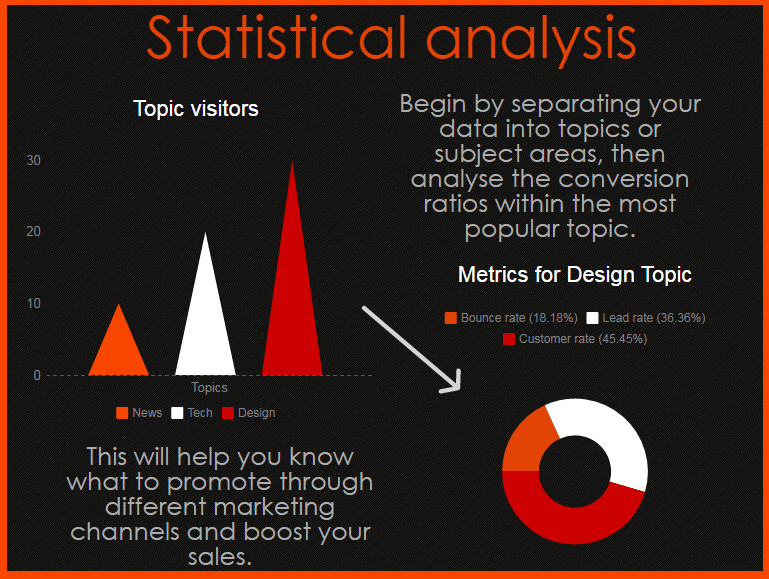Launching a website is a huge and exciting step for any business or company. But once your site is out there, how can you tangibly measure the sites performance? Due to the prevalence of inbuilt “insights”, most businesses will measure the channel-centric metrics. This focuses on email, social media, and all channels that lead to viewers or generate sales. So, what’s the difference between channel-centric and content-centred? Here at Pumpkin Web Design, we are digital marketing experts, and this is our guide to content-centred metrics.
What are content-centred metrics?
Measuring the user response to the actual content on the page is what content centred metrics are all about. Content attracts viewers, generates sales, and most importantly, is what will bring interest to your business or company. But how can you measure the success of your content?
Successful web content is content that has been interacted with by your viewers and not just skipped past. Consequently, if people are interested in the topic, you will quickly generate leads and sales, thus boosting business. To measure this, you should group your content into different topics, and measure the views, shares, comments and click throughs from each of the topics. Furthermore, you can use this topic data to boost your business.
Metrics
Content centred metrics relate to:
- Visit rate. This looks at which content topic is generating the most visitors for business.
- Lead-rate. This explores how well each topic converts visitors into leads.
- Customer-rate. This looks at how many of these leads turn into actual customers
It is clear that, each of these three questions are essential when analysing your content data. Most importantly, once you have established the most successful topics, you can then look at ways to increase their productivity. This will happen by turning more and more visitors into actual customers. This may include:
- Clearer call to action buttons
- In text links to relevant buying pages
- Optimising these topics for multi-channel success
Channel-centric metrics
Another way to measure success is channel-centric metrics. Once you have analysed your content and you are certain you are producing excellent, original content that generates interested viewers, you can begin to measure the success of your various channels. These may be social media, email, or advertising.
In summary
Content centred metrics measure the success of your websites content by breaking it down into topics and exploring the visit-rate, lead-rate, and customer-rate. As a result, these metrics can help you boost sales, generate revenue and promote interest in your business. For all your digital marketing needs, contact us at Pumpkin Web Design today.

